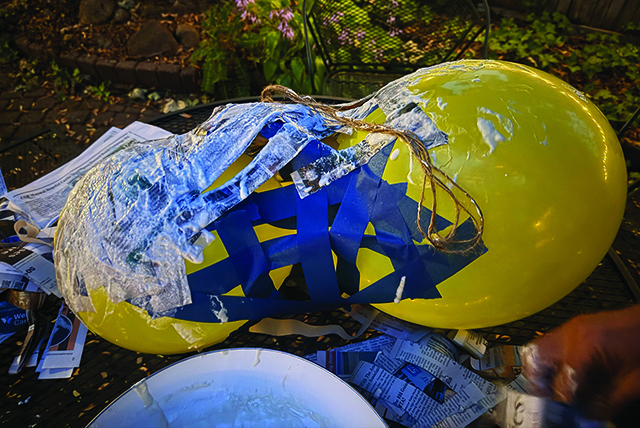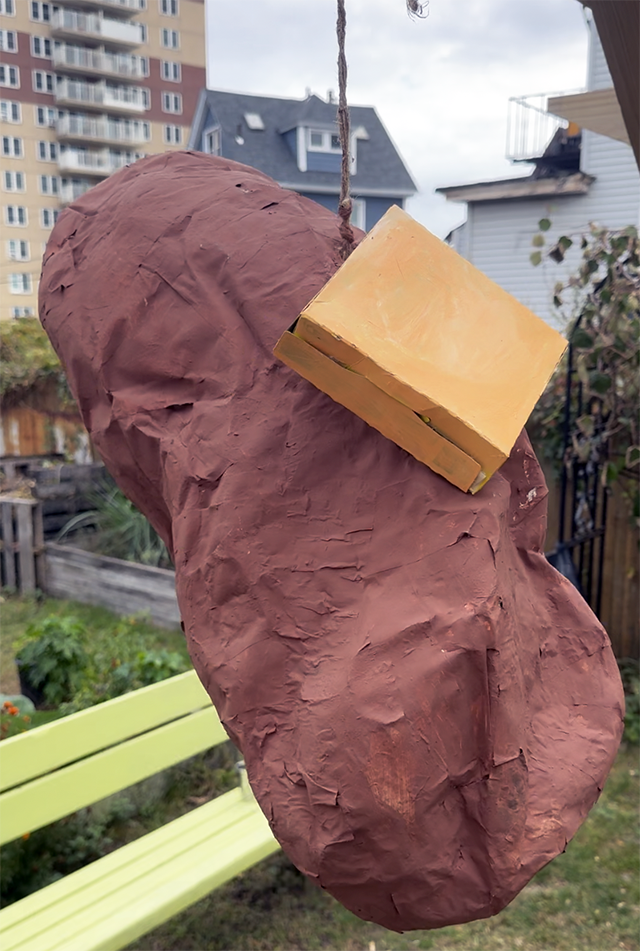The Strange History of Beating Pinatas
Why do we let our kids beat up cute-faced avocados and pink unicorn piñatas with a bat? Think about it, it’s really deranged.
This came up as I was preparing for our upcoming community garden event. I want to make a themed piñata (no spoiler alert). Talking with my friends, I said, “Well, it has to have a face—otherwise it will be boring.” After a few minutes of debate, I switched sides. Yeah… this is totally wrong. It basically promotes the subconscious idea that violence toward humans and animals is fun and acceptable. Heavy, I know.
And yet, here we are, joyfully smashing smiling dinosaurs stuffed with Snickers and Skittles at birthday parties across the United States. How did we get here?

Statue of a Franciscan friar hitting a piñata in Acolman, Mexico State. Source Wikipedia
The history of the piñata is a long evolution through many different cultures. I will try to briefly summarize this fascinating journey:
The piñata originated in China for the Chinese New Year in the 13th century. Figures shaped like cows or oxen were covered in colored paper and decorated. The people would strike them with sticks, spilling seeds, symbolizing abundance. The remains were burned, and people collected the ashes for good luck. So far wholesome.
Marco Polo brought the Chinese piñata tradition to Europe in the 14th century, where it was adopted by Christians and associated with Lent as “Piñata Sunday.” The word comes from the Italian pignatta, meaning “fragile pot.” Early piñatas looked like clay water jars, which some say inspired the pineapple shape. The Latin piña also hints at pineapples or pine cones.
When the piñata custom drops in Spain, the first Sunday of Lent turns into the “Dance of the Piñata.” Later, Spanish missionaries brought it to Mexico, and interestingly, the Aztecs and Mayans already had their own clay-pot traditions tied to gods, offerings, and games. The missionaries just rebranded it with colored paper for religious teachings of god and evil.
And here’s where it gets dark. The decorated clay pot—called a cantaro- was said to symbolize Satan, all dressed up to lure us in. The classic piñata, with its seven spiky points, stood for the seven deadly sins: greed, gluttony, sloth, pride, envy, wrath, and lust. Bright and beautiful on the outside, it tempted us, while the candies and fruit inside symbolized earthly pleasures. Yes, you will never look at a pinata in the same way.
The blindfold stood for faith “fe” which must be blind. Players were spun (sometimes 33 times for Christ’s years) to throw off their sense of space before taking a swing. The act of beating the piñata was denouncing evil. And the reward for rejecting Satan in this way was then the bounty inside.
Today we just beat piñatas for fun! It’s all candy and birthday hats, but one may argue that we’re anthropomorphizing papier-mâché animals, princesses, and cute foods by slapping on a face and then smacking it with a plastic bat until it dies. Hmmm. Next time you’re planning that 7-year-old’s birthday, maybe go with a faceless piñata? Still fun, just a little less nightmare vibe.
Source.
No face!




























